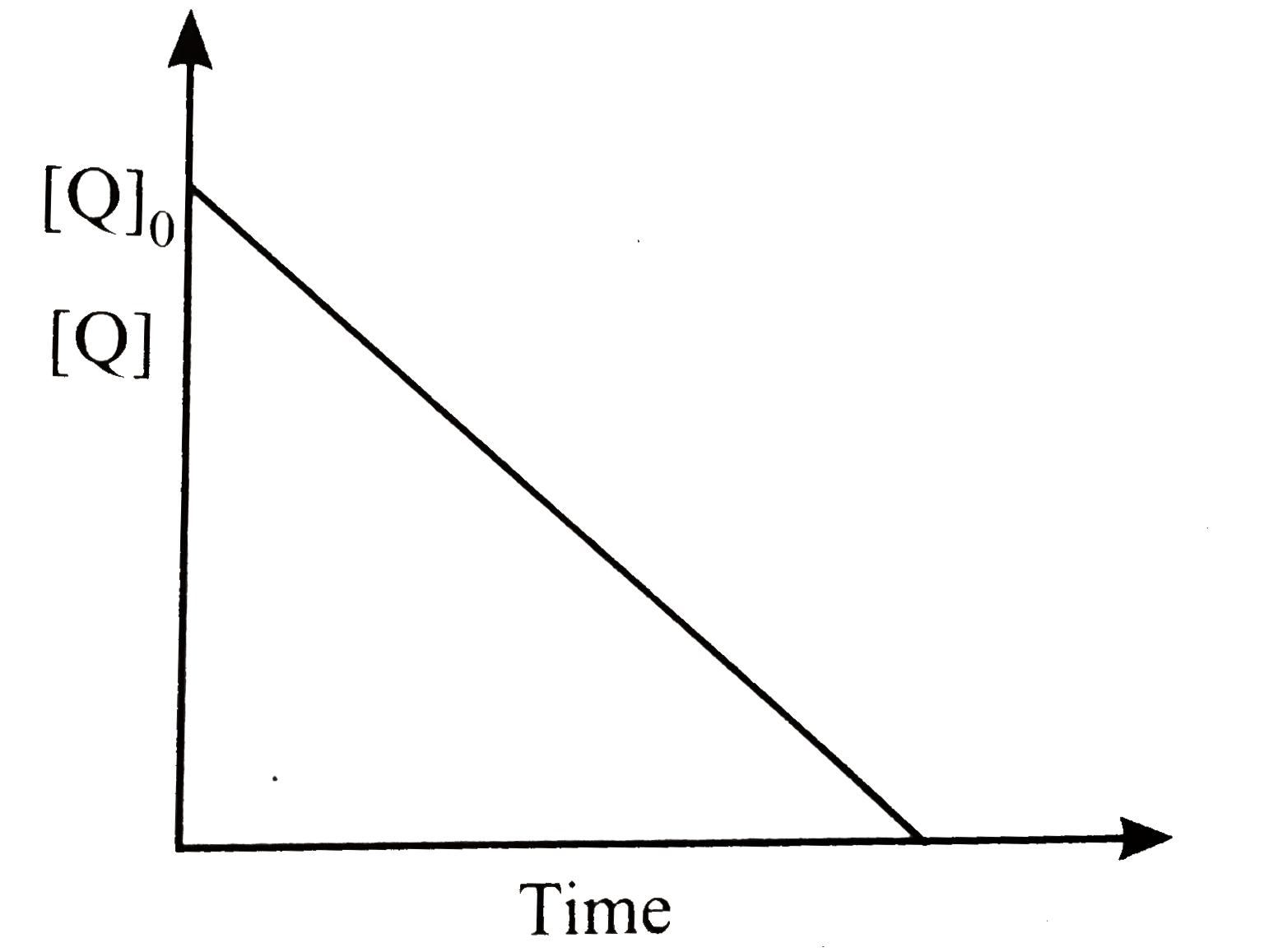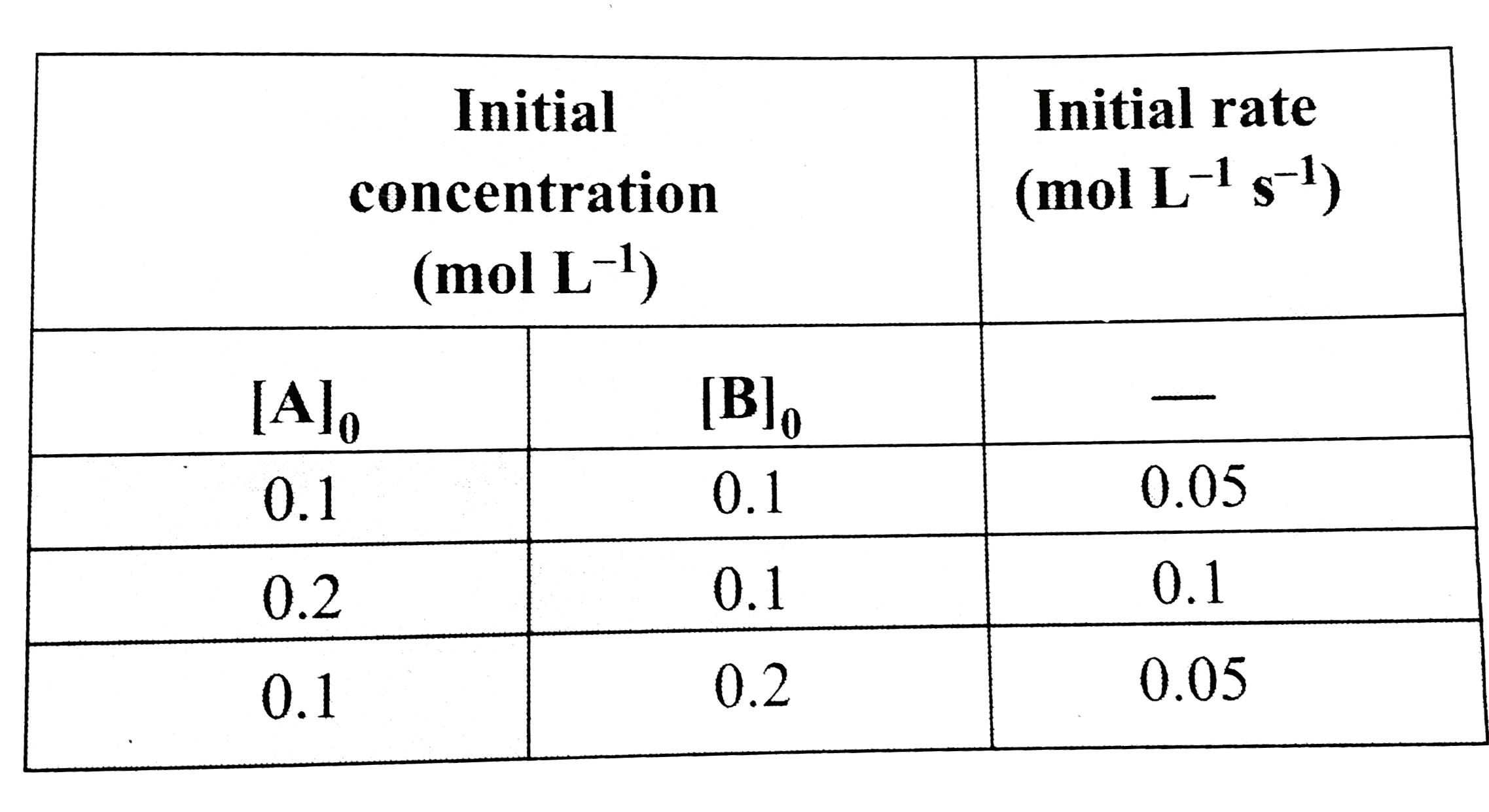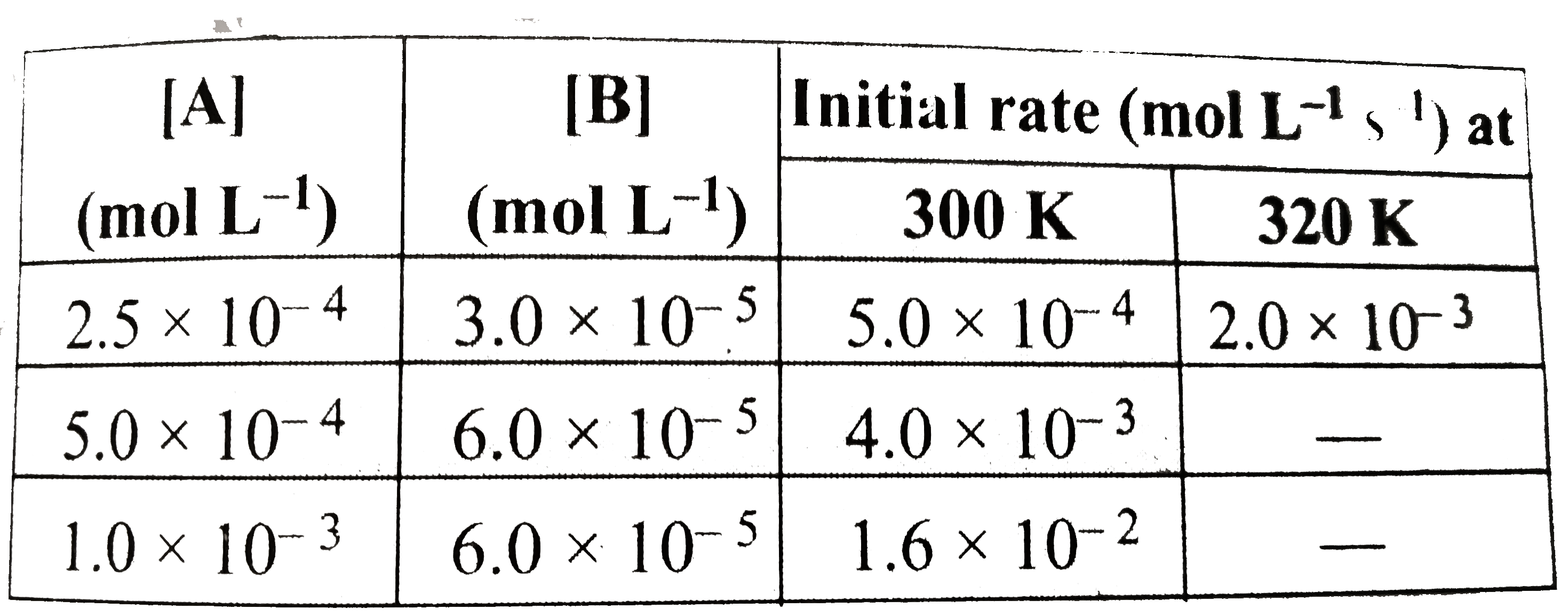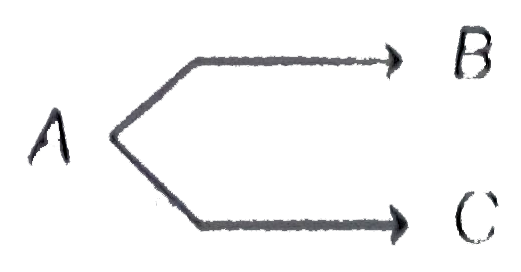Complete Solutions to JEE Main And Advanced of chapter CHEMICAL KINETICS of Class 12 book with complete answers and questions
| Class 12 | CHEMISTRY |
| Chapter | CHEMICAL KINETICS |
| IIT-JEE PREVIOUS YEAR | JEE Main And Advanced |
| Number Of Questions | 66 |
| Academic Year | 2023-24 |
Two reactions `R_(2) and R_(2)` have identical pre - exponential factors. Activations enery of `R_(1)` exceeds that of `R_(2)` by 10 kJ `mol_(-1)` . If `k_(1) and k_(2)` are rate constants for rate constants for reactions `R_(1) and R_(2)`
respectively at 300k , then In `(k_(2)/k_(1))`is equal to `(R=8.314 J mol^(-1)K^(-1))`04:12View SolutionDecompsition of `H_(2)O_(2)` follows a frist order reactions. In 50 min the concentrations of `H_(2)O_(2)` decreases from 0.5 to 0.125 M in one such decomposition . When the concentration of `H_(2)O_(2)` reaches 0.05 M, the rate of fromation of `O_(2)` will be
03:37View SolutionHigher order `(gt3)` reaction are rare due to :
01:25View SolutionFor the elementary reaction `MrarrN`, the rate of disappearance of `M` increases by a factor of `8` upon doubling the concentration of `M`. The order of the reaction will respect to `M` is
02:22View SolutionFor the non-stoichiometric reaction `2A+BrarrC+D`
The following kinetic data were obtained in theee separate experiment, all at `98 K`
`|{:("Initial concentration (A)","Initial concentration (B)","Initial rate of formation of C" (molL^(-1) s^(-1))),(0.1 M,0.1 M,1.2 xx 10^(-3)),(0.1 M,0.2 M,1.2 xx 10^(-3)),(0.2 M,0.1 M,2.4 xx 10^(-3)):}|`
The rate law for the formation of `C` is:05:23View SolutionIn the reaction, `P+Q rarr R+S`
the time taken for `75%` reaction of `P` is twice the time taken for `50%` reaction of `P`. The concentration of `Q` varies with reaction time as shown in the figure. The overall order of the reaction is
 07:26View Solution
07:26View SolutionThe rate of a reaction doubles when its temperature changes form `300 K` to `310 K`. Activation energy of such a reaction will be:
`(R = 8.314 JK^(-1) mol^(-1) and log 2 = 0.301)`02:46View SolutionPlots showing the variation of the rate constant `(k)` with temperature `(T)` are given below. The plot that follows the Arrhenius equation is
02:32View SolutionFor a first order reaction `A rarr P`, the temperature `(T)` dependent rate constant `(k)` was found to follow the equation `log k = -2000(1//T) + 6.0`. The pre-exponential factor `A` and the activation energy `E_(a)`, respective, are
01:54View SolutionUnder the same reaction conditions, the intial concentration of `1.386 mol dm^(-3)` of a substance becomes half in `40 s` and `20 s` theough first order and zero order kinetics, respectively.
The ratio `(k_(1)//k_(0))` of the rate constants for first order `(k_(1))` and zero order `(k_(0))` of the reaction is02:27View SolutionConisder a reaction `aG+bH rarr` Products. When concentration of both the reactants `G` and `H` is doubled, the rate increases eight times. However, when the concentration of `G` is doubled, keeping the concentration of `H` fixed, the rate is doubled. The overall order of reaction is
04:47View Solutionwhich one of the following statements (s) in incorrect about order of reduction?
02:04View SolutionA follows first order reaction.
`(A) rarr Product`
The concentration of `A` changes form `0.1 M` to `0.025 M` in `40 min`. Find the rate of reaction of `A` when the concentration of `A` is `0.01 M`.02:07View SolutionIn a first order reaction, the concentration of the reactant decreases form `800 "mol dm"^(-3)` to `50 "mol dm"^(-3)` in `2 xx 10^(4) s`. The rate constant of the reaction (in `s^(-1)`) is
02:36View SolutionConisder the chemical reaction
`N_(2)(g) + 3H_(2)(g) rarr 2NH_(3)(g)`
The rate of this reaction can be expressed in terms of time derivatives of the concentration of `N_(2)(g), H_(2)(g)`, or `NH_(3)(g)`. Identify the correct relationship among the rate expresisons.01:31View SolutionIf `I` is the intenisty of an absorbed light and `c` is the concentration of `AB` for the photochemical process. `AB+hv rarr AB^(**)`, the rate of formation of `AB^(**)` is directly proportional to
03:02View SolutionThe rate constant for the reaction, `2N_(2)O_(5) rarr 4NO_(2) + O_(2)` is `3.0 xx 10^(-5) s^(-1)`. If the rate is `2.40 xx 10^(-5) mol L^(-1) s^(-1)`, then the initial concentration of `N_(2)O_(5)` (in `mol L^(-1)`) is
01:44View SolutionThe half`-` life periof of a radioactive element is 140 days. After 560 days, one gram of the element will reduce to
01:30View SolutionA catalyst is a substance which
02:12View SolutionThe specific rate constant of a first order reaction depends on the
00:43View SolutionThe rate constant of a reaction depends on
01:51View SolutionAccording to the Arrhenius equctions
03:09View SolutionFor the first order reaction
`2N_(2)O_(5)(g) rarr 4NO_(2)(g) + O_(2)(g)`05:04View Solutionthe following statement (s) is are correct
04:34View SolutionA catalyst
03:22View SolutionWhat should be the age of fossil for meaningful determination of its age?
01:34View SolutionA nuclear explosion has taken place leading to increase in concentration of `C^(14)` in nearby areas. `C^(14)` concentration is `C_(1)` in nearby areas and `C_(2)` in areas far away. If the age of the fossil is determind to be `T_(1) and T_(2)` at the places respectively then
06:25View SolutionIn the Arrhenius equation, `k = A exp^(-Ea//RT)`, A may be termed as the rate constant at…………. .
01:14View SolutionFor the reaction `N_(2)(g)+3H_(2)(g) rarr 2NH_(3)(g)`, under certain conditions of temperature and partial pressure of the reactants, the rate of formation of `NH_(3)` is `0.001 kg h^(-1)`. The same rate of converison of hydrogen under the same condition is................`kg h^(-1)`.
03:33View SolutionThe hydroliss of ethyl acetate in………… medium is a…………..order reaction.
03:33View SolutionThe rate of chemical change is directly proportional to …………… .
02:42View SolutionFor a first order reaction, the rate of the reaction doubles as the concentration of the rection (S)doubles.
01:16View SolutionAn organic compound undergoes first decompoistion. The time taken for its decompoistion to `1//8` and `1//10` of its initial concentration are `t_(1//8)` and `t_(1//10)`, respectively. What is the value of `([t_(1//8)])/([t_(1//10)]) xx 10`? `(log_(10)2 = 0.3)`
04:42View Solution`2X(g) rarr 3Y(g)+2Z(g)`
`{:("Time (in min)",0,100,200,):}`
`|{:("Partial pressure of X (mm Hg)",800,400,200,),("Assuming ideal gas condition, calculate",,,,):}|`
(a) Order of reaction
(b) Rate constant
( c) Time taken for `75%` completion of reaction
(d) Total pressure when `p_(x) = 700 mm`05:23View SolutionFor the given reaction
`A+B rarr` Products,
the following data are given.

(a) Write the rate equation.
(b) Calculate the rate constant.05:07View SolutionThe rate of first order reaction is `0.04 mol L^(-1) s^(-1)` at `10 min` and `0.03 mol L^(-1) s^(-1)` at `20 min` after initiation. Find the half life of the reaction.
04:31View SolutionA hydrogenation reaction is carried out at `500 K`. If the same reaction is carried out in the presence of a catalyst at the same rate, the temperature required is `400 K`. Calculate the activation energy of the reaction if the catalyst lowers the activation barrier by `20 kJ mol^(-1)`.
06:27View SolutionThe rate constant for an isomerization reaction, `A rarr B` is `4.5 xx 10^(-3) min^(-1)`. If the initial concentration of `A` is `1 M`, calculate the rate of the reaction after `1 h`.
02:40View Solutionthe rate constant of a reaction is `1.5xx10^(7) s^(-1) at 50^(@)C and 4.5 xx10 ^(7) s^(-1) at 100 ^(@)C.`Evaluate the Arrhenius paraments ` A and E^(a)`.
(ii) for the reaction `N_(2)O_(5)(g) to 2NO_(2)(g) + 1/2 O_(2)(g)`
calculate the mole fractions `N_(2)O_(5)(g)` decomposed at a constant valume and temperature , if the initial pressses os 600 mm Hg and the pressure at any time is 960 mm Hg Assume ideal gas behaviour.09:32View SolutionThe rate constant for the first order decompoistion of a certain reaction is described by the equation
`log k (s^(-1)) = 14.34 - (1.25 xx 10^(4)K)/(T)`
(a) What is the energy of activation for the reaction?
(b) At what temperature will its half-life periof be `256 min`?04:26View SolutionOne of the hazards of nuclear explosion is the generation of `.^(90)Sr` and its subsequent incorporation in bones. This nuclide has a half-life of `28.1` year. Suppose one micro-gram was absorbed by a new-born child, how much `Sr^(90)` will remain in his bones after 20 year?
02:47View SolutionAt `380^(@)C` , the half-life periof for the first order decompoistion of `H_(2)O_(2)` is `360 min`. The energy of activation of the reaction is `200 kJ mol^(-1)`. Calculate the time required for `75%` decompoistion at `450^(@)C`.
05:34View Solutionform the following data for the reaction between `A` and `B`,

(a) Calculate the order of the reaction with respect to `A` and with respect to `B`.
(b) Calculate the rate constant at `300 K`.
( c) Calculate the pre-expontential factor.15:35View SolutionThe gas phase decomposition of dimethyl ether follows first order kinetics.
`CH_(3)-O-CH_(3)(g)rarrCH_(4)(g)+H_(2)(g)+CO(g)`
The reaction is carried out in a constant volume container at `500^(@)C` and has a half life of `14.5 min`. Initially, only dimethyl ether is present at a pressure `0.40 atm`. What is the total pressure of the system after `12min`? (Assume ideal gas behaviour)04:25View SolutionA first order reaction `A rarr B` requires activation energy of `70 kJ mol^(-1)`. When a `20%` solution of `A` was kept at `25^(@)C` for `20 min`, `25%` decomposition took place. What will be the percentage decomposition in the same time in a `30%` solution maintained at `40^(@)C` ? (Assume that activation energy remains constant in this range of temperature)
09:11View SolutionTwo reaction, `(I)A rarr` Products and `(II) B rarr` Products, follow first order kinetics. The rate of reaction `(I)` is doubled when the temperature is raised form `300 K` to `310K`. The half life for this reaction at `310K` is `30 min`. At the same temperature `B` decomposes twice as fast as `A`. If the energy of activation for reaction `(II)` is twice that of reaction `(I)`, (a) calculate the rate of constant of reaction `(II)` at `300 K`.
13:32View SolutionThe nuclide ratio, `._(1)^(3) H` to `._(1)^(1) H` in a sample of water is `8.0xx10^(-18) : 1` Tritium undergoes decay with a half-life period of `12.3yr` How much tritium atoms would `10.0g` of such a sample contains `40` year after the original sample is collected?
04:43View SolutionThe decompoistion of `N_(2)O_(5)` according to the equation `2N_(2)O_(5)(g) rarr 4NO_(2)(g)+O_(2)(g)`
is a first order reaction. After `30 min`, form the start of the decompoistion in a closed vessel, the total pressure developed is found t be `284.5 mm Hg`. On complete decompoistion, the total pressure is `584.5 mm Hg`. Calculate the rate constant of the reaction.06:18View SolutionIn a Arrhenius equation for a certain reaction, the values of `A and E_(a)` ( energy of activation)are `4xx10^(13)s^(-1)` and `98.6KJ mol^(-1)`, respectively. If the reaction of first order at, what temperature will its life periof be `10 min`.
03:52View SolutionAN experiment requires minimum beta activity produced at the rate of 346 beta particles per minute. The half- life period of `_(42)Mo^(99)` , which is a beta emitter , is 66.6 h . Find the minimum amount of `_(42)Mo^(99)` required to carry out the experiment in 6.909 h.
07:00View SolutionA first order gas reaction has `k = 1.5 xx 10^(-6) s^(-1)` at `200^(@)C`. If the reaction is allowed to run for `10 h`, what have changed in the Product? What is the half-life of this reaction?
03:17View SolutionWhile studying the decompoistion of gaseous `N_(2)O_(5)`, it is observed that a plot of logarithm of its partial pressure versus time is linear. What kinetic parameters can be obtained form this observation?
05:04View SolutionRadioactive decay is a first`-` order process. Radioactive carbon in wood sample decays with a half`-` life of 5770 years. What is the rate constant `(` in years `)` for the decay ? What fraction would remains after 11540 years ?
02:42View SolutionCalculating time requireed to complete a definite fraction of first order reaction : A first order reaction is `20%` complete in 10 minutes. Calculate the time taken for the reaction to go to `75%` completion.
Stratagy : First calculate the rate constant (k) using frist data and then calculate the required time to complete `75%` of the reaction by using the value of rate constant :04:47View SolutionRate of a reaction `A + B rarr` Product, is given as a function of different initial concentration of `A` and `B`.
`|{:([A] (mol L^(-1)),(B) (mol L^(-1)),"Initial rate" (mol L^(-1) min^(-1)),),(0.01,0.01,0.005,),(0.02,0.01,0.010,),(0.01,0.02,0.005,):}|`
Determine the order of the reaction with respect to `A` and with respect to `B`. What is the half life of `A` in the reaction ?05:45View SolutionThe activity of a radioactive isotope is `3000` count per minute at a certai time and `2736` count per minute after `48` h later. The half-life of this isotope is
02:21View SolutionFor a reaction, `Ato` Product, half life measured for two different values of inital concentrations `5xx10^(-3) M` and `25xx10^(-4) M` are 1.0 and 8.0 h respectively. If the initial concentration is adjusted to `1.25xx10^(-3) M`, the new half-life would be
04:52View SolutionIn a consecutive reaction : `A to B to C` starting with only A
02:30View SolutionFor a first order chemical raction, which of the following describe the plot of logarithmic of friction of uncreated reactant vs time?
02:46View SolutionFor a general nth order process,`AtoP` with initial concentration of reactant "a" and rate constant, the expression for time for `75%` completion of reaction is
05:20View SolutionWhich of the following is (are) correct for variation of rate constant with temoperature?
03:51View SolutionWhich of the following is (are) true for the rate constant of a chemical reaction?
02:04View SolutionAssertion : In a chemical reaction, rate of reaction always decreases with time.
Reason In a chemical reation, the amount of reactant remaining always decreases with time.01:18View SolutionAssertion: A catalyst increases the rate of a given reaction by greater factor if added at lower temperature than at higher temperature.
Reason Rate of reaction always increases on increasing temperature.01:54View SolutionMatch the statemens of Column I with values of Column II.
 04:28View Solution
04:28View SolutionConsider the following parallel first order reactions:

Half-life of the overall decay of A is 2 ys while half-life for the formation of B is 3yr. Half-life for the formation for C (in years) is :03:25View Solution
JEE Main And Advanced questions and complete solutions for chapter CHEMICAL KINETICS of IIT-JEE PREVIOUS YEAR (CHEMISTRY) of Class 12
